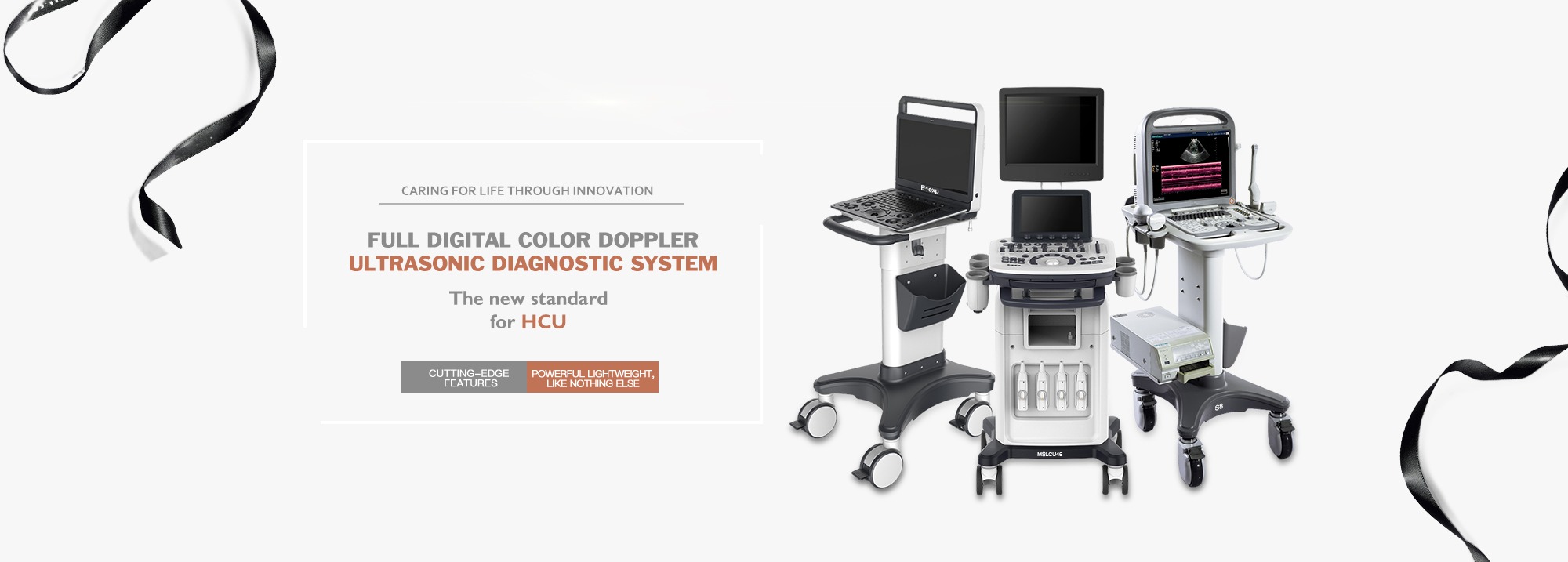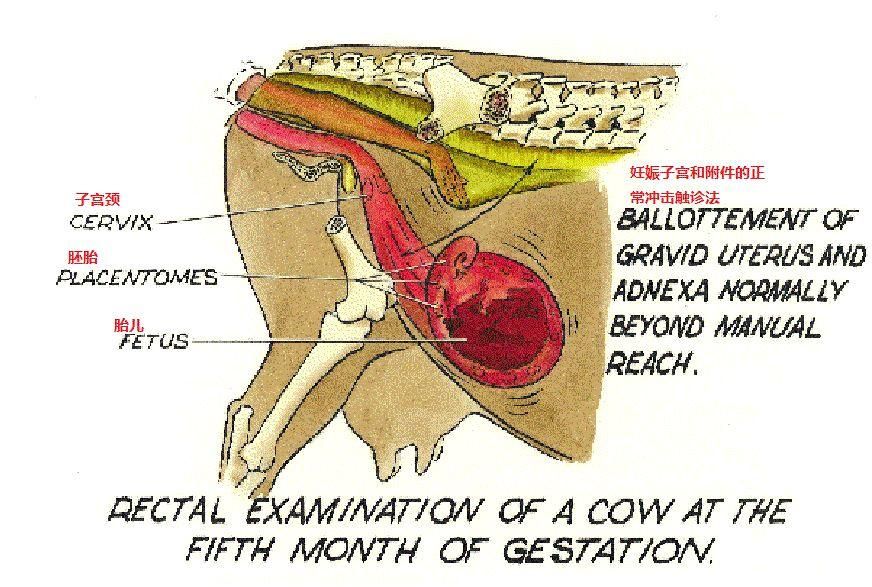In recent years, the veterinary ultrasound industry has been vigorously promoted and developed. Because of its comprehensive function, cost-effective, and no damage to the animal body and other advantages, it is recognized and widely used by users.
At present, most breeding units still have big technical problems in the operation of veterinary B-ultrasound, so the application of veterinary B-ultrasound in farms is mostly limited to pregnancy diagnosis, and the full function of veterinary B-ultrasound is not fully played.
B ultrasonic cattle field application diagram
In farming, the factors that cause reproductive disorders in dairy cows are related to many diseases that dairy cows are prone to.
In cattle farms with normal feeding levels, there are two common types of reproductive disorders: one is endometritis, and the other is hormone imbalance. These reproductive disorders can be preliminatively screened by bovine B-ultrasonography.
Causes of endometritis in dairy cows
In cow breeding practice, most of the endometritis is caused by lochia retention and bacterial proliferation due to improper handling during or after calving or weak contractions.
Artificial insemination is through a variety of ways into the vaginal uterus, if improper operation, disinfection is not strict, will also be an important cause of endometritis. The uterine environment can be clearly observed through bovine B-ultrasound, so in the usual feeding and management work, the use of bovine B-ultrasound inspection is very important.
Schematic illustration of artificial insemination of cattle
Postnatal diagnosis of cows by B-ultrasound
After the removal of the new fetal coat, the uterine epithelial cells break and thud, and the secretions composed of mucus, blood, white blood cells and fat are called lochia.
It is a very important work to observe the postnatal cows by B-ultrasound.
Since childbirth is generally an open bacterial environment, there will be bacterial invasion after calving, and the amount of bacteria in lochia depends on the sanitary conditions and calving/midwifery during and during the puerperal period.
Cattle with good health, clean environment, strong uterine contraction, normal estrogen secretion (so that the endometrial hyperemia, increased white blood cell activity and "self-purification"), generally about 20 days, the uterus will become aseptic state, at this time also need to use bovine B-ultrasound to check the uterus.
The presence of malodorous substances of other nature and color in the lochia of dairy cows indicates the occurrence of endometritis. If there is no lochia or mastitis within 10 days postpartum, bovine B-ultrasound must be used to check for endometritis. All kinds of endometritis will affect the success rate of reproduction to varying degrees, so bovine B-ultrasonography to check the uterine environment is a necessary means, and the purification of the uterus is also very important.
How to tell if a cow is in heat?
(1) Appearance test method:
The average duration of estrus is 18 hours, ranging from 6 to 30 hours, and 70% of the time when estrus starts is from 7 p.m. to 7 a.m.
Early estrus: agitated, moo, slightly swollen pubic area, intimate behavior, chasing other cows.
Middle estrus: climb over the cow, constantly moo, vulva contractions, increased defecation and urination, sniffing other cows, vulva moist, red, swollen, mucous.
Post-estrus: not receptive to other cattle climbing, dry mucus (cows in estrus interval of 18 to 24 days).
(2) Rectal examination:
To determine if and how estrus the cow is, reach into the rectum and touch the maturation of the superior ovarian follicles through the intestinal wall. When the cow is in estrus, one side of the ovary is touched because of follicular development, and its volume is generally larger than that of the other side of the ovary. When touching its surface, it will feel that the follicle protrudes from the surface of the ovary, which is tense, smooth, soft, thin and elastic, and there is a sense of fluid fluctuation. At this time, the effect of ultrasonography is the most understandable and intuitive.
Ultrasound image of bovine follicle
Diagram of rectal examination
(3) Vaginal examination method:
The opening device was inserted into the vagina of the cow, and the changes of the outer cervix of the cow were observed. The vaginal mucosa of the cow without estrus was pale and dry, and the cervix was closed, dry, pale and compressed into the chrysanthemum vagina without mucus. If the cow is in estrus, there is often mucus in the vagina, and the vaginal mucus is shiny, congested and moist, and the cervix is open, and the cervix is congested, flushed, moist and shiny.
Suitable breeding time for cows after giving birth
When is the best time for a cow to conceive after delivery, mainly depends on the recovery of postpartum uterine rejuvenation and ovarian function.
If the uterus of the cow is in good condition after delivery and the ovaries quickly return to the normal function of ovulation, the cow is easy to get pregnant. On the contrary, if the cow's uterine rejuvenation time is prolonged and the ovulatory function of the ovary fails to recover, the cow's estrus conception should be delayed accordingly.
Therefore, the first breeding time of postpartum cows, too early or too late is not appropriate. Breeding is too early, as the cow's uterus has not fully recovered, it is difficult to conceive. If the breeding is too late, the calving interval of the cows will be lengthened accordingly, and fewer cows will be born and less milk will be produced, which will reduce the economic utilization efficiency of the cows.
How to improve the fertility of cows
The main factors affecting the fecundity of cows are heredity, environment, nutrition, breeding time and human factors. The application of the following measures is conducive to the improvement of the fecundity of cows.
(1) Ensure comprehensive and balanced nutrition
(2) Improve management
(3) Maintain normal ovarian function and eliminate abnormal estrus
(4) Improving reproduction techniques
(5) Prevention and treatment of infertility caused by diseases
(6) Eliminate cows with congenital and physiologic infertility
(7) Make full use of favorable climatic and environmental conditions to improve the breeding efficiency of cows
Diagram of the normal fetal position of a cow during childbirth 1
Diagram of the normal fetal position of a cow during childbirth 2
Post time: Nov-30-2023
















